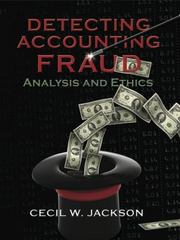Question
Luc Binet was in shock because based on his current operating plans, Coffee Services was going to destroy almost 300,000 worth of value during Luc's
Luc Binet was in shock because based on his current operating plans, Coffee Services was going to destroy almost 300,000 worth of value during Luc's first full year of ownership. After recovering from the shock, he thinks about how he can turn the business around.
Based on the product-line profitability analysis provided to him by his accountant, The profitability of a kit delivered to an Office customer brought in 8/kit, on average, while a kit delivered to a Restaurant customer brought in only 1/kit, on average. Based on this data, the main way to increase profitability would be to expand sales to the Office customers and/or cut costs somehow/somewhere (but with no information on where he should focus his cost cutting efforts).
Before making this decision, Luc wanted some more information from his accountant. Specifically, we wanted a more-detailed breakdown of overhead costs between the two customer segments. His accountant came back to him with the following breakdown:
(10%). (90%)
Overhead costs: Office Restaurant
Delivery Costs (personnel/equip). 270,000. 2,430,000
Marketing/Advertising. 150,000. 1,350,000
Selling Commissions (per kit). 90,000. 810,000
Product Line Management Personal. 40,000. 360,000
other administrative. 50,000. 450,000
Total Overhead Costs. 600,000. 5,4000,000
At first, Luc was frustrated with the data his accountant had provided him with. The reason is that since he already knew kit sales were split 10%/90% between Office and Restaurant customers, the further breakdown of overhead costs by the same 10%/90% split didn't actually provide any new information to him.
But then the proverbial lightbulb went off. He made the important realization that kit volume-based cost allocations made by his accountant didn't actually describe how his business actually operated. That is, for some of the overhead activities, he realized that the resources expended on each customer segment did not correspond to the 10%/90% split assumed by his accountant.
Based on this insight, he and his accountant embarked on what Luc called a business process analysis (which I would call an activity analysis and others might call a process mapping exercise). Essentially, what they did was consult accounting records to determine what expenditures were made to support which customers, had detailed discussions with the product line managers to see where they spent time, and tracked how many deliveries were made to each type of customer. This process took a considerable amount of time and effort. The end result was the following breakdown between customer segments:
Business Process. Office. Restaurant
Deliveries. 10,000. 20,000
Avg, Cost per Delivery. 90. 90
Avg. Delivery Size. 3 kits. 13.5 kits
Marketing & Advertising. 55%. 45%
Selling Commissions. 10%. 90%
Product line Managers 2 3
Other administrative. Not related to either products
Based on this information, he first concluded that the original customer segment profitability estimates ( 8/kit for an office customer kit and 1/kit for a Restaurant customer) where essentially meaningless. Instead, he instructed his accountant to produce new profit estimates where overhead was allocated between customer segments according to the information form the business process analysis. He told the accountant not to bother dividing up the Other Administrative costs because he didn't think there was any reasonable way to do so.
Answer the following questions:
- What is the average profitability per kit delivered to an office customer (a restaurant customer) based on the information above? 2.
- Based on the available information, including what you calculated for the first question, what should Luc do to improve profitability?
What changes would you advise Luc to make to improve his business? Include the ABC profit numbers per kit for a restaurant customer and an office customer.
Step by Step Solution
There are 3 Steps involved in it
Step: 1

Get Instant Access to Expert-Tailored Solutions
See step-by-step solutions with expert insights and AI powered tools for academic success
Step: 2

Step: 3

Ace Your Homework with AI
Get the answers you need in no time with our AI-driven, step-by-step assistance
Get Started


